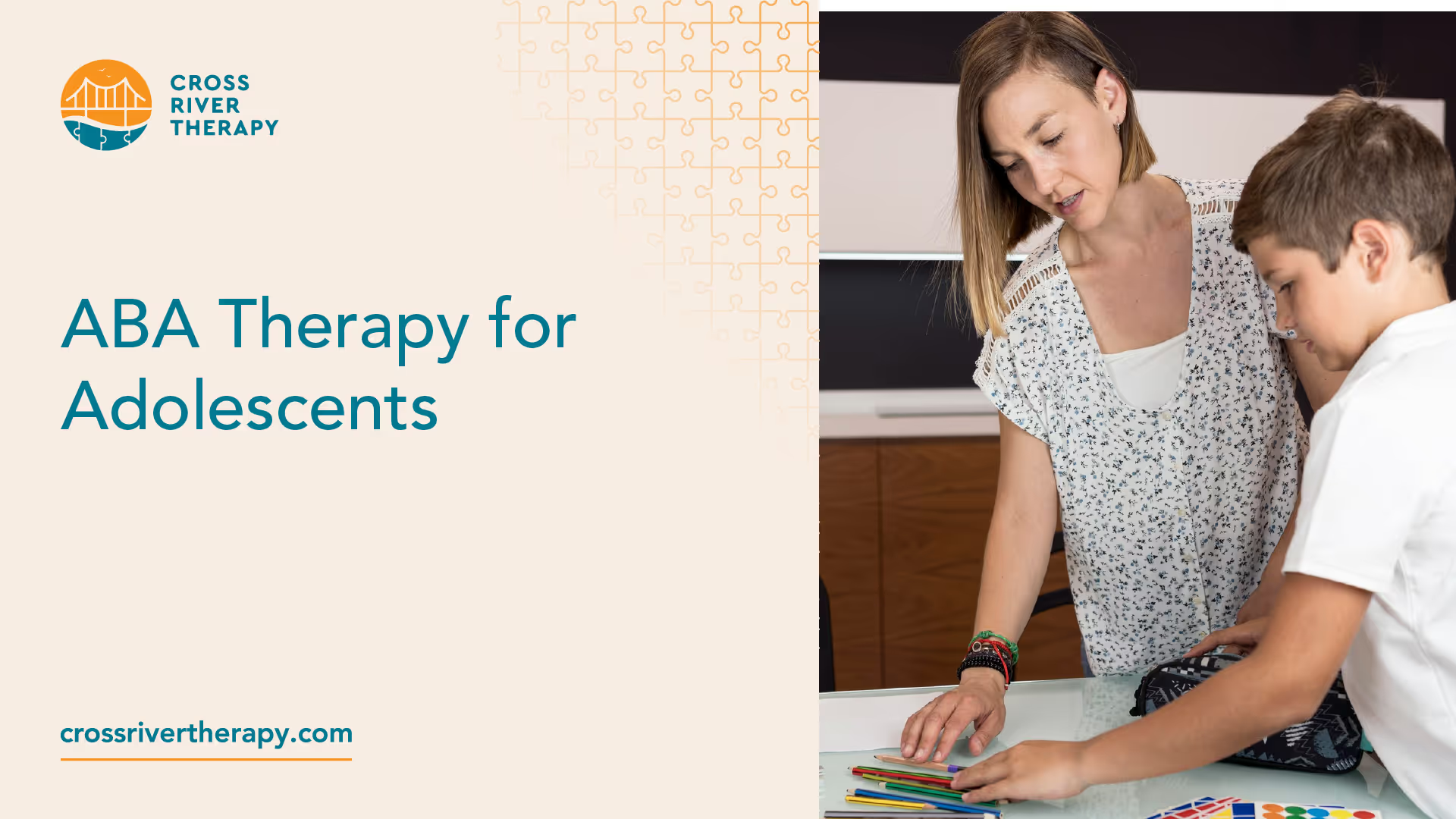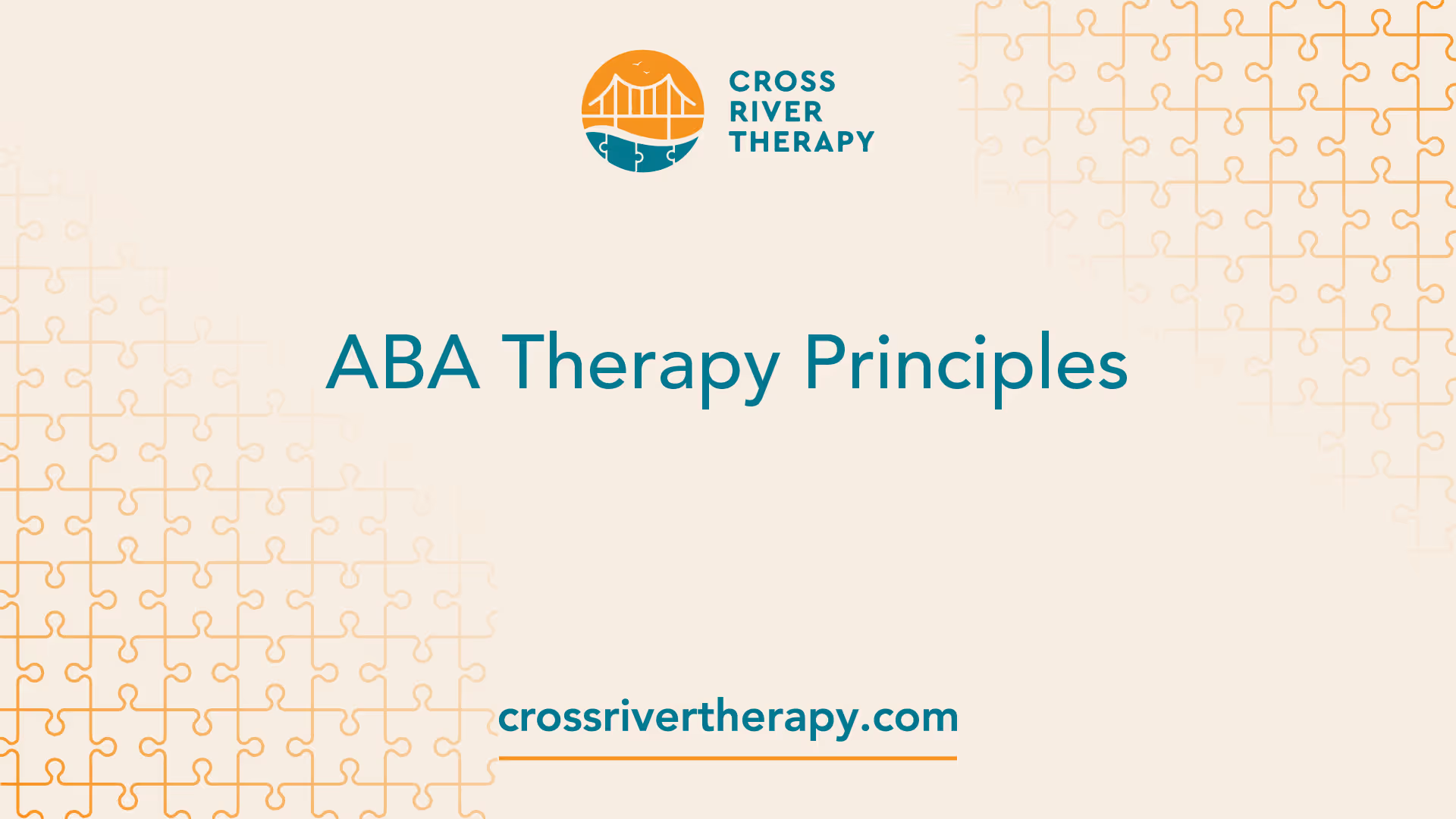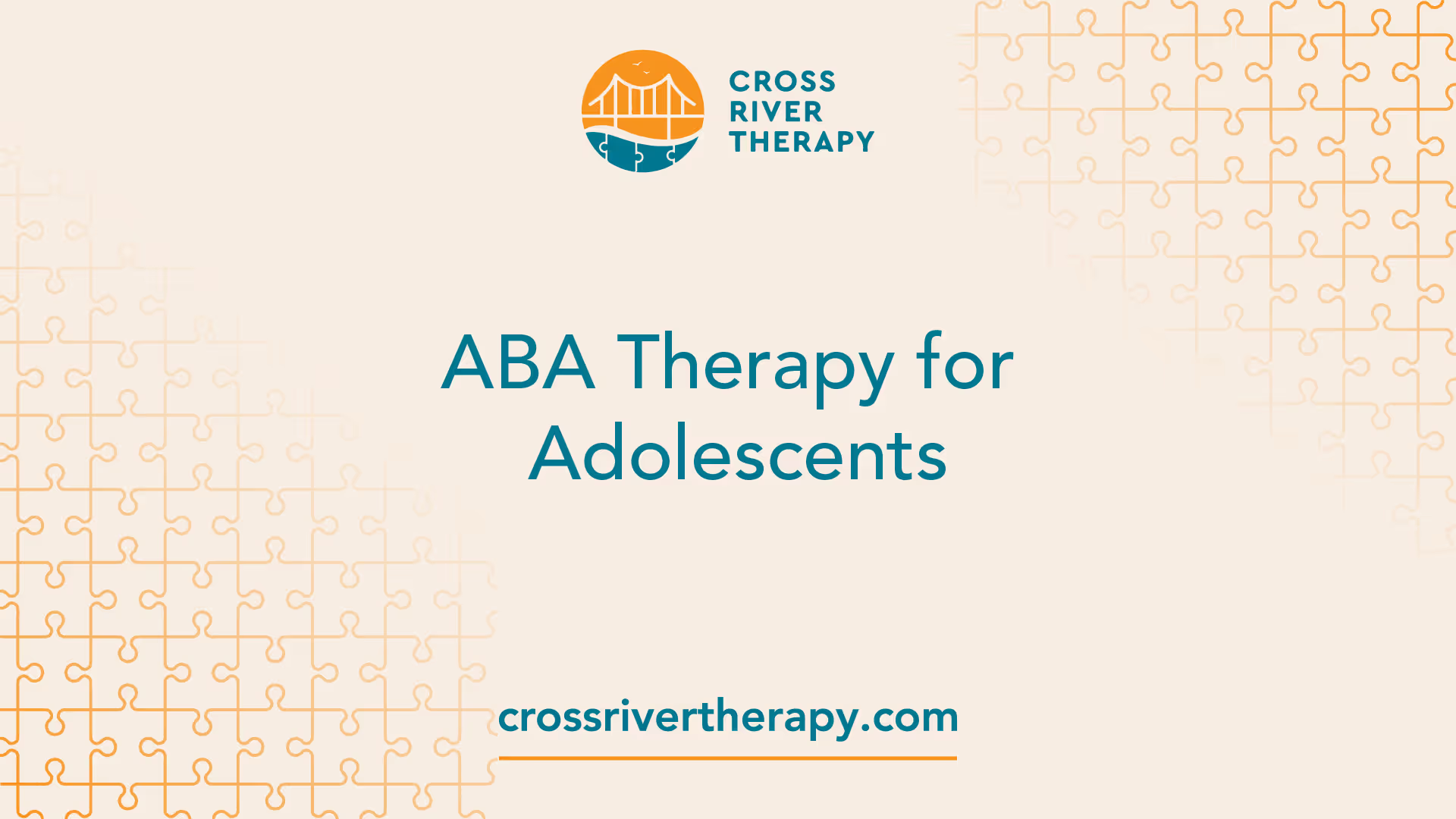ABA Therapy for Adolescents
Explore the benefits and techniques that can make a real difference.
Understanding ABA Therapy
To gain insight into ABA therapy for adolescents, it's important to understand the history and effectiveness of this approach.

History of ABA Therapy
ABA (Applied Behavior Analysis) therapy has been utilized to assist children with autism and related developmental disorders since the 1960s. It is a comprehensive and evidence-based treatment that focuses on analyzing and modifying behavior to improve socially significant skills [1]. Over the years, ABA therapy has evolved, incorporating various techniques and strategies to meet the unique needs of individuals on the autism spectrum.
Effectiveness of ABA Therapy
ABA therapy is recognized as an evidence-based best practice treatment by the US Surgeon General and the American Psychological Association. This recognition signifies that ABA therapy has undergone rigorous scientific testing, demonstrating its usefulness, quality, and effectiveness.
Research has consistently shown that ABA therapy is effective for individuals of all ages, from early childhood through adulthood, across the autism spectrum, regardless of the severity of the condition. It is regarded as the most thoroughly researched and successful therapy for autism.
For teenagers with autism spectrum disorder, ABA therapy offers a structured and individualized approach, focusing on the development of essential skills required for daily life. It can target areas such as independent living skills, social skills, communication skills, and reduction of problematic behaviors.
By recognizing the history and effectiveness of ABA therapy, parents can gain confidence in its potential to assist their adolescent children with autism. In the following sections, we will explore the specific benefits and techniques employed in ABA therapy for adolescents, as well as the factors that contribute to its success.
ABA Therapy Principles
When it comes to ABA therapy, there are key principles that guide its implementation. These principles ensure that the therapy is effective and tailored to meet the individual needs of each child. Two important aspects of ABA therapy principles are the role of a board-certified behavior analyst (BCBA) and the individualized approach taken in therapy.

BCBA Role in ABA Therapy
A board-certified behavior analyst (BCBA) plays a crucial role in ABA therapy. They are responsible for designing and directly overseeing ABA programs, customizing them to each learner's skills, needs, interests, preferences, and family situation [1]. BCBA's are highly trained professionals with expertise in child psychology, general psychology, and developmental psychology. They must pass an exam by the Board of Certified Behavior Analysts to obtain certification. Many BCBA's hold advanced degrees such as Master's, Doctorate, or Ph.D..
The BCBA collaborates closely with the child, their family, and the therapy team to develop and implement individualized treatment plans. They conduct assessments, collect data, and analyze the progress made by the child. The BCBA also ensures that the therapy remains effective by making necessary adjustments based on the child's changing needs.
Individualized Approach in ABA Therapy
ABA therapy is known for its individualized approach. Each child with autism has unique strengths, challenges, and learning styles. ABA therapy acknowledges these differences and tailors the treatment to meet the specific needs of each individual. This personalized approach allows therapists to address specific goals and target behaviors that are most relevant to the child's development.
The individualized approach in ABA therapy extends beyond the therapy room or autism-specific classrooms. For adolescents and adults, ABA therapy may focus on daily routines and settings to help individuals develop more effective behaviors for social interactions and communication. By integrating therapy into real-life situations, individuals with autism can generalize their skills and apply them in various settings, such as home, school, and community.
Through the individualized approach, ABA therapists work closely with families to understand their goals and priorities for their child. This collaboration ensures that the therapy aligns with the family's values and is integrated into the child's daily life. It also enables parents to learn strategies and techniques that they can use to support their child's progress outside of therapy sessions.
By emphasizing the role of BCBA's and the individualized approach, ABA therapy sets a strong foundation for effective and personalized treatment for adolescents with autism. This approach allows therapists to address specific needs and goals, while involving parents and caregivers in the therapy process.
ABA Therapy for Adolescents
When it comes to treating autism spectrum disorder (ASD), Applied Behavior Analysis (ABA) therapy is an effective approach that can benefit individuals of all ages, including teenagers. ABA therapy focuses on teaching essential skills, reducing problematic behaviors, and promoting independence in daily life. Let's explore the benefits of ABA therapy for adolescents and its emphasis on social behaviors.

Benefits for Adolescents
ABA therapy has been shown to be effective for people of all ages, from early childhood through adulthood, according to Autism Speaks. For teenagers with autism, ABA therapy offers a range of benefits. It can help develop daily living skills, such as navigation, shopping, and personal hygiene, promoting independence. These skills are essential for future endeavors like going to college, applying for a job, or running errands without immediate assistance.
In addition to daily living skills, ABA therapy for adolescents focuses on improving communication, social skills, and behavior management. High-quality ABA interventions can lead to significant improvements in behavior, communication, social skills, and daily living skills. By participating in ABA therapy sessions, teenagers with autism spectrum disorder can learn to communicate their needs effectively, develop coping skills, and enhance their social interactions. These skills are crucial for creating meaningful relationships and navigating social situations.
Focus on Social Behaviors
One of the key areas of focus in ABA therapy for adolescents is social behavior. ABA therapists work closely with teenagers to target and improve social skills that are essential for their age group. By using evidence-based strategies, therapists help individuals with autism spectrum disorder develop age-appropriate social skills, understand social cues, and engage in meaningful interactions.
Through structured activities, role-playing, and real-life situations, ABA therapists assist adolescents in learning how to initiate and maintain conversations, interpret non-verbal cues, and navigate social norms. These skills help teenagers with autism spectrum disorder feel more confident and comfortable in social settings, which can have a positive impact on their overall well-being and quality of life.
By tailoring ABA therapy to the unique needs of each individual, therapists create personalized treatment plans that address the specific challenges and strengths of adolescents with autism spectrum disorder. The goal is to improve daily life by teaching essential skills that are developmentally appropriate [3]. With the right support and guidance from qualified ABA therapists, adolescents with autism can make significant progress in their social behaviors and overall functioning.
In the next section, we will explore some of the ABA techniques employed during therapy sessions to modify behavior and provide positive reinforcement. Stay tuned to learn more about the strategies used in ABA therapy for adolescents.
ABA Techniques for Adolescents
When it comes to ABA therapy for adolescents, there are specific techniques that are commonly employed to facilitate learning, promote positive behavior, and enhance overall functioning. Two key techniques used in ABA therapy for adolescents are behavior modification and positive reinforcement.
Behavior Modification
ABA therapy involves more than just behavior modification; it is a systematic approach to introducing and supporting socially appropriate behaviors. It emphasizes the learning and reinforcement of behaviors while identifying positive "replacement behaviors" for those that are not socially appropriate. Behavior modification techniques aim to increase desired behaviors and decrease harmful or challenging ones.
In the context of ABA therapy for adolescents, behavior modification techniques may include:
- Prompting: Using verbal or physical cues to guide the adolescent towards the desired behavior.
- Shaping: Breaking down complex behaviors into smaller, more manageable steps, reinforcing each step until the complete behavior is achieved.
- Chaining: Teaching a sequence of behaviors by linking them together, reinforcing each step in the sequence.
- Token Systems: Implementing a reward system where the adolescent earns tokens or points for exhibiting desired behaviors, which can be exchanged for preferred items or activities.
These behavior modification techniques are tailored to the specific needs of each adolescent, with the goal of promoting positive behavior and fostering skill development.
Positive Reinforcement
Positive reinforcement is a fundamental technique used in ABA therapy for adolescents. It involves providing rewards or incentives to increase the likelihood of desired behaviors being repeated. Positive reinforcement can be an effective motivator and helps to create a positive learning environment.
In ABA therapy for adolescents, positive reinforcement techniques may include:
- Verbal praise: Providing verbal praise or encouragement when the adolescent demonstrates the desired behavior.
- Tangible rewards: Offering small rewards, such as stickers, tokens, or preferred items, when the adolescent exhibits the target behavior.
- Social rewards: Allowing the adolescent to engage in preferred social activities or interactions as a reward for displaying the desired behavior.
- Natural consequences: Allowing the adolescent to experience the natural positive consequences of their behavior, such as earning privileges or increased independence.
Positive reinforcement techniques are individualized and aim to motivate and reinforce the adolescent's progress, promoting the development of new skills and positive behaviors.
By utilizing behavior modification techniques and positive reinforcement, ABA therapists can help adolescents on the autism spectrum learn and acquire essential skills for daily living. These techniques are tailored to the unique needs of each individual, taking into account their strengths, weaknesses, and specific treatment goals. ABA therapy for adolescents is an individualized approach that focuses on empowering teenagers, enhancing their quality of life, and promoting their independence.
Collaboration in ABA Therapy
Collaboration between parents and ABA therapists plays a crucial role in the success of ABA therapy for adolescents with autism. By working together, parents and therapists can create a supportive and effective environment for the child's development. In this section, we will explore the importance of parental involvement and effective communication with therapists in ABA therapy.
Involvement of Parents
Parents and caregivers are key contributors to the progress of their child's ABA therapy journey. Collaborating with Board Certified Behavior Analysts (BCBAs) and ABA therapists provides parents with valuable insights and strategies to support their child's development. Establishing an active and collaborative relationship with the therapy team is essential for achieving the best outcomes.
By actively participating in the therapy process, parents can reinforce the skills and behaviors learned during ABA sessions. This involvement helps to create consistency and generalization of skills across different settings. Additionally, parents can gain a deeper understanding of the principles and techniques used in ABA therapy, allowing them to provide ongoing support and encouragement at home.
To promote parental involvement, ABA therapists often provide guidance and training to parents, equipping them with the necessary tools to support their child's progress. This collaborative effort between parents and therapists strengthens the impact of ABA therapy and enhances the child's long-term success.
Communication with Therapists
Effective communication between parents and ABA therapists is vital for ensuring the therapy process is aligned with the child's goals and needs. Regular and open communication channels allow for the exchange of information, progress updates, and addressing any concerns or challenges that may arise.
Establishing clear lines of communication helps parents stay informed about their child's progress and any modifications made to the therapy plan. ABA therapists can provide valuable insights into the child's development, share strategies for generalizing skills beyond therapy sessions, and address any questions or concerns parents may have.
Collaborative communication also allows parents to provide feedback to the therapy team. By sharing observations and insights from home, parents contribute to a comprehensive understanding of the child's behaviors and progress. This feedback enables therapists to make necessary adjustments and tailor the therapy approach to meet the unique needs of the child.
Maintaining open lines of communication can be facilitated through various methods, such as scheduled meetings, progress reports, and even digital platforms that allow for real-time updates and information sharing. The ultimate goal is to create a collaborative and supportive partnership between parents and therapists, ensuring the best outcomes for the child.
By embracing parental involvement and fostering effective communication with ABA therapists, parents can play an active role in their child's ABA therapy journey. This collaboration strengthens the therapy process, promotes consistency, and enhances the child's overall progress. Together, parents and therapists can create a nurturing environment that supports the child's development and empowers them to reach their full potential.
Success Factors in ABA Therapy
When it comes to ABA therapy for adolescents, several factors contribute to its success. Understanding these factors can help parents and caregivers make informed decisions about their child's therapy journey. Two critical success factors in ABA therapy are early intervention benefits and the intensity and duration of therapy.
Early Intervention Benefits
Research has shown that early and intensive ABA therapy can significantly improve outcomes for individuals with autism, including adolescents. More than 20 studies have demonstrated the positive impact of intensive and long-term ABA therapy on intellectual functioning, language development, daily living skills, and social functioning [1]. Initiating ABA therapy during early childhood, even as young as 2 years old, can yield the most transformative results.
The adaptability of young brains plays a crucial role in the effectiveness of early intervention. Young children are more responsive to behavioral adjustments and learning, making it an ideal time to implement ABA therapy. By intervening early, you can maximize your child's potential for growth and development.
Intensity and Duration of Therapy
The efficacy of ABA therapy extends across various age groups, including adolescents. ABA therapy is an effective approach that can benefit individuals of all ages, regardless of when an autism diagnosis is made [1]. For teenagers with autism spectrum disorder, ABA therapy can focus on teaching independent living skills, social skills, communication skills, and reducing problematic behaviors.
The intensity and duration of ABA therapy play a vital role in its effectiveness. ABA therapy typically involves regular and consistent sessions that focus on specific goals tailored to the individual's needs. The frequency and duration of therapy sessions can vary depending on the severity of the individual's challenges and goals. It is essential to work closely with qualified ABA therapists to develop a personalized treatment plan that meets the unique needs of your adolescent.
By maintaining a high level of intensity and ensuring an adequate duration of therapy, you provide your child with more opportunities for skill development and progress. The consistency and commitment to therapy are key to achieving long-lasting positive outcomes.
In addition to early intervention and the intensity of therapy, collaboration between therapists and parents is crucial. ABA therapy often involves training parents and caregivers, equipping them with the tools and techniques used in ABA. This collaborative effort allows parents to reinforce learned behaviors and skills, leading to more sustainable and long-lasting positive outcomes for the adolescent [5]. By actively participating in the therapeutic process, parents become an integral part of their child's progress.
Understanding the success factors in ABA therapy empowers parents and caregivers to make informed decisions about their child's treatment. By seeking early intervention and ensuring the appropriate intensity and duration of therapy, parents can create a solid foundation for their adolescent's growth and development. With the right support and collaboration, ABA therapy can make a significant difference in the lives of adolescents with autism spectrum disorder.
References
[1]: https://www.autismspeaks.org/applied-behavior-analysis
[2]: https://www.autismspeaks.org/expert-opinion/aba-teens
[3]: https://blueabatherapy.com/aba/aba-therapy-for-teens/
[4]: https://www.crossrivertherapy.com/pros-and-cons-of-aba-therapy
[5]: https://abacustherapies.com/understanding-aba-therapy-pros-and-cons-explained



